| |||||
| Decades: | |||||
|---|---|---|---|---|---|
| See also: | |||||
The following lists events that happened in 1938 in El Salvador .
| |||||
| Decades: | |||||
|---|---|---|---|---|---|
| See also: | |||||
The following lists events that happened in 1938 in El Salvador .

El Salvador, officially the Republic of El Salvador, is a country in Central America. It is bordered on the northeast by Honduras, on the northwest by Guatemala, and on the south by the Pacific Ocean. El Salvador's capital and largest city is San Salvador. The country's population in 2023 was estimated to be 6.5 million.
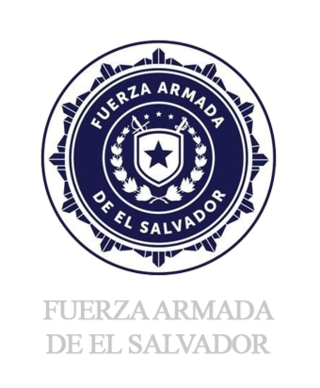
The Armed Forces of El Salvador are the official governmental military forces of El Salvador. The Forces have three branches: the Salvadoran Army, the Salvadoran Air Force and the Navy of El Salvador.

Alfredo Félix Cristiani Burkard is a Salvadoran politician who was President of El Salvador from 1989 to 1994.

The Revolutionary Government Junta was the name of three consecutive joint civilian-military dictatorships that ruled El Salvador between 15 October 1979 and 2 May 1982.

Maximiliano Hernández Martínez was a Salvadoran military officer and politician who served as the president of El Salvador from 4 December 1931 to 28 August 1934 in an acting capacity and again in an official capacity from 1 March 1935 until his resignation on 9 May 1944. He was the leader of El Salvador during World War II. While he served as President Arturo Araujo's vice president and defense minister, a directorate seized power during a palace coup and afterwards named Hernández Martínez president of El Salvador.

Fernando Figueroa was the President of El Salvador from 14 May to 18 June 1885 and again from 1 March 1907 to 1 March 1911. He also served twice as Minister of National Defense and Governor of San Vicente.
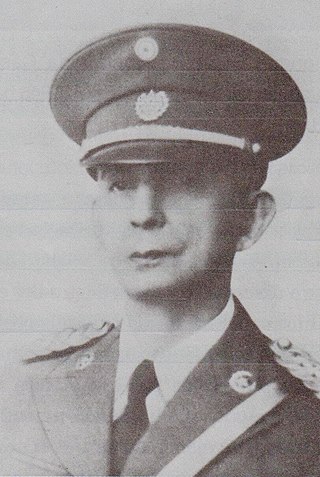
Osmín Aguirre y Salinas was a Salvadoran military officer and politician who served as the provisional president of El Salvador from 21 October 1944 until 1 March 1945. A Colonel in the Salvadoran Army, Aguirre y Salinas led two successful coups against the Salvadoran government: once in 1931 and again in 1944. He left office in 1945, with the assurance that his successor in the next election would be Salvador Castaneda Castro. He was later assassinated near his home in San Salvador at the age of 87.
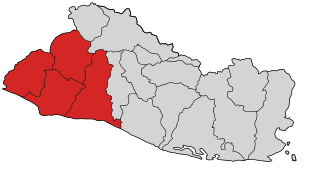
La Matanza refers to a communist-indigenous rebellion that took place in El Salvador between 22 and 25 January 1932. It was succeeded by large-scale government killings in western El Salvador, which resulted in the deaths of 10,000 to 40,000 people.
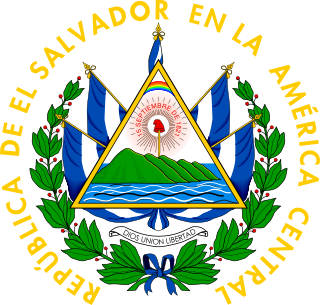
El Salvador has functioned under fifteen constitutions since it achieved independence from Spain in the early 19th century. The vast majority of these documents were drafted and promulgated without the benefit of broad popular input or electoral mandate. The nature of the country's elite-dominated political system and the personalistic rule of presidents drawn from either the oligarchy or the military accounted for the relatively short life span of most of these documents. Some of them were drafted solely to provide a quasi-legal basis for the extension of a president's term, whereas others were created to legitimize seizures of power on an ex post facto basis.

The Salvadoran military dictatorship was the period of time in Salvadoran history where the Salvadoran Armed Forces governed the country for almost 48 years from 2 December 1931 until 15 October 1979. The authoritarian military dictatorship limited political rights throughout the country and maintained its governance through rigged and fixed elections.

The Truth Commission for El Salvador was a restorative justice truth commission approved by the United Nations to investigate the grave wrongdoings that occurred throughout the country's twelve year civil war. It is estimated that 1.4 percent of the Salvadoran population was killed during the war. The commission operated from July 1992 until March 1993, when its findings were published in the final report, From Madness to Hope. The eight-month period heard from over 2,000 witness testimonies and compiled information from an additional 20,000 witness statements.

The Civic Directory was a military junta which governed El Salvador from 2 to 4 December 1931. The junta was composed of twelve members of the Armed Forces of El Salvador from the army, air force, and National Guard. The directory marked the beginning of the era of military dictatorships in El Salvador which lasted until October 1979 with the 1979 Salvadoran coup d'état and the establishment of the Revolutionary Government Junta, a joint civilian-military government which ruled until 1982.

The 1931 Salvadoran coup d'état occurred on 2 December 1931. The coup overthrew President Arturo Araujo and led to the establishment of the Civic Directory. The coup began 48 years of military rule in El Salvador which lasted until the 1979 Salvadoran coup d'état.
The following lists events that happened in 1944 in El Salvador.
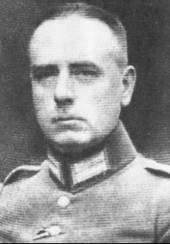
Eberhardt Julius Georg Waldemar Bohnstedt, also sometimes spelt Eberhard, was a German general and commander of the 7th Infantry Division in 1939. He is most well known for being the director of the Military School in El Salvador from 1938 to 1939. He retired from military life in 1939. He was the older brother of Wilhelm Bohnstedt.

Joaquín Valdés was a Salvadoran military officer who served as the Minister of National Defense from 1931 to 1935 and as Co-chairman of the Civic Directory in December 1931.

The Palm Sunday Coup was an attempted military coup d'état in El Salvador which occurred in early-April 1944. The coup was staged by pro-Axis sympathizers in the Salvadoran Army against President General Maximiliano Hernández Martínez.
Anarchism in El Salvador reached its peak during the labour movement of the 1920s, in which anarcho-syndicalists played a leading role. The movement was subsequently suppressed by the military dictatorship before experiencing a resurgence in the 21st century.

The Captain General Gerardo Barrios Military School, abbreviated as the EMCGGB, was a military academy in El Salvador. It was established in 1868 and is named after Captain General Gerardo Barrios who served as President of El Salvador from 1859 to 1863. It was located in Antiguo Cuscatlán, Santa Tecla, La Libertad. It was demolished in June 2022 to make way for the construction of the Estadio Nacional de El Salvador.